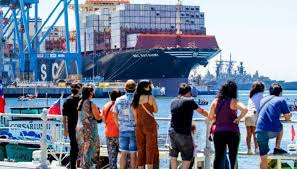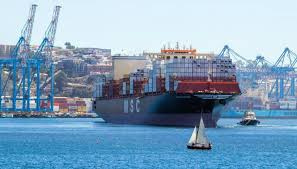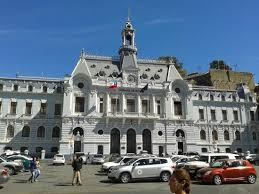How has Valparaíso’s economy evolved over the years?

How has Valparaíso’s economy evolved over the years?
How has Valparaíso’s economy evolved over the years? Valparaíso, once one of the most important ports in South America, has experienced significant economic transformations throughout its history.
The city’s economy has evolved in response to changing trade patterns, industrial developments, and social dynamics. Here’s a closer look at the key phases of Valparaíso’s economic evolution.
Colonial Economy (16th-18th Century)
In the colonial period, Valparaíso served as a vital port for the Spanish Empire, facilitating trade between Spain and its American colonies.
The economy relied heavily on shipping goods such as silver, agricultural products, and raw materials, establishing the city as a regional trade hub.

Nitrate Boom (19th Century)
The discovery of nitrate in northern Chile during the late 19th century sparked an economic boom for Valparaíso.
The city became the primary export port for this valuable resource, attracting foreign investment and increasing its importance in global trade.
Industrialization and Infrastructure Development
As trade grew, Valparaíso underwent industrialization, leading to the construction of docks, warehouses, and railroads.
This infrastructure facilitated the efficient movement of goods, supporting the city’s status as a major shipping center.
Immigration and Labor Supply
The economic boom attracted a diverse wave of immigrants seeking opportunities in Valparaíso.
This influx of people contributed to a growing labor force, essential for supporting the expanding industries and services in the city.
Decline of Nitrate Economy (Early 20th Century)
By the early 20th century, the nitrate boom began to decline due to market saturation and the discovery of synthetic alternatives.
This decline prompted Valparaíso to diversify its economy, seeking new avenues for growth and development.
World Wars Impact
Both World Wars had significant effects on Valparaíso’s economy, disrupting trade routes and altering shipping patterns.
The port adapted by focusing on local needs and shifting towards supporting military logistics during wartime.
Tourism Development (Late 20th Century)
In the late 20th century, Valparaíso began to embrace tourism as an economic driver, capitalizing on its historical and cultural significance.
The city’s unique architecture, vibrant arts scene, and picturesque landscapes attracted both domestic and international visitors.
Cultural and Creative Industries
Valparaíso has cultivated a thriving cultural and creative sector, with art, music, and literature playing significant roles in its economy.
The city has become a hub for artists and creators, contributing to its economic diversification and appeal.
Modern Economic Challenges
In recent years, Valparaíso has faced economic challenges, including high unemployment rates and social inequality.
Efforts to address these issues include initiatives to promote entrepreneurship, innovation, and sustainable development.
Sustainability and Eco-Tourism
The focus on sustainability has grown, with initiatives aimed at preserving the environment and promoting eco-friendly tourism.
These efforts are designed to ensure the long-term viability of Valparaíso’s economic activities while protecting its natural and cultural resources.
In summary, Valparaíso’s economy has evolved from a colonial trade hub to a diverse modern economy shaped by historical events, industrial changes, and cultural developments.
While the city has faced challenges, it continues to adapt, seeking new opportunities for growth in tourism, culture, and sustainability.
Valparaíso’s economic journey reflects its resilience and ability to navigate the complexities of a changing world, making it a dynamic city in Chile’s economic landscape.





Leave a Reply